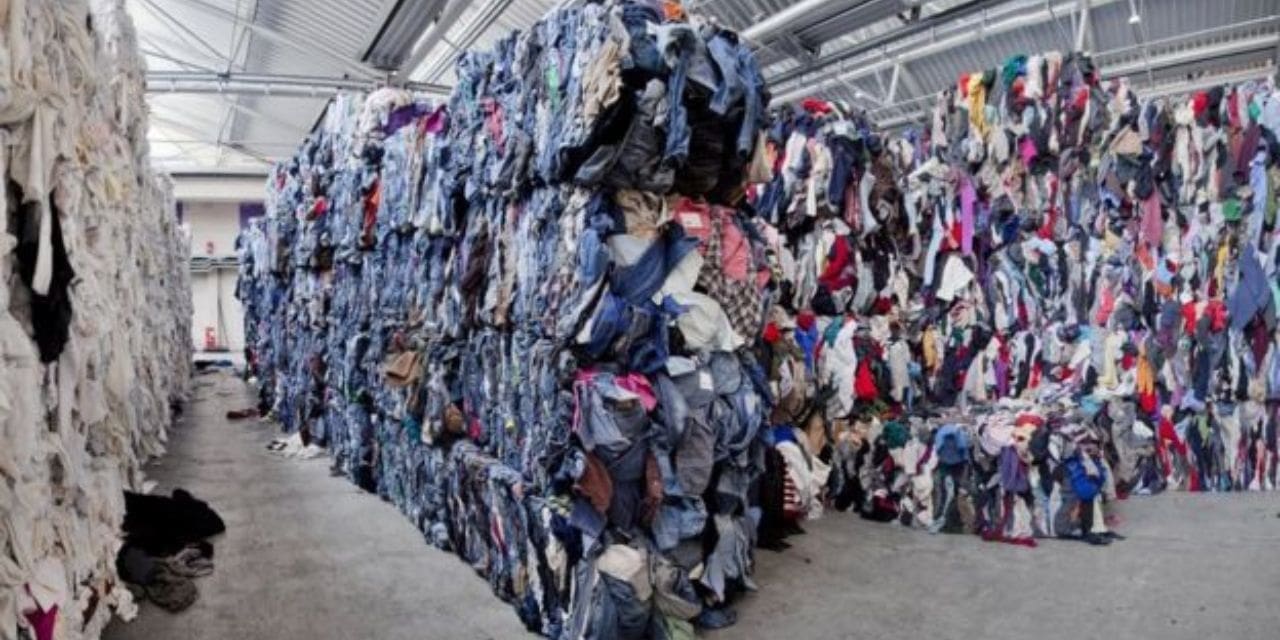The textile industry generates 92 million tons of waste annually, accounting for 7% of global waste. It uses 10% of global carbon emissions and 93 billion cubic meters of water. Recycling offers a way forward by reusing this waste.
Mechanical recycling is the most common recycling method. It involves shredding textile waste into 6-26 mm fibres, suitable for lower-end products. While simple, mechanical recycling yields shorter fibres and handles only around 15-18% of total textile waste due to fibre blending and contamination issues. However, it requires 20-30% less energy and resources.
Chemical recycling breaks down polymers at the molecular level. While able to process similar quantities of textile waste, it is an expensive process consuming 165 types of chemicals classified as hazardous and 3-10% of global greenhouse gas emissions.
Both methods yield key environmental benefits. Textile recycling reduces pressure on raw material extraction by around 20-30%. By minimizing the 7-7.5 million tons of textile waste going into EU landfills annually, recycling leads to lower methane emissions.
From an economic standpoint, recycling confers benefits. By reducing the use of resources and energy by 20-30%, recycling leads to cost savings. It will also create economic opportunities from secondary raw materials worth an estimated €160 billion by 2030.
However, issues remain. Only around 30% of pre-consumer waste is recycled mechanically in India due to fibre blending and contamination challenges. Chemical recycling, though more effective remains niche due to high costs and potential secondary pollution. Difficulties also exist in collecting the estimated 165 billion garments disposed of annually.
Parameters for Mechanically Recycled Cotton Fibre
The output fibre length of mechanically recycled cotton depends on the type of textile waste used as feedstock. Pre-consumer garment cutting waste produces fibres from 6 to 21mm and yarn hard waste typically yields fibres in the 6 to 26 mm range. Pre-consumer woven selvage and fabric-cutting waste produce fibres from 6 to 21 mm. Meanwhile, post-consumer denim and jean waste results in fibres from 6 to 18 mm. The fibre length is an important parameter since it impacts the technical properties and applications of the recycled fibres. In general, longer fibres are preferred as they offer better spinnability and material properties. However, the shredding and recycling process often leads to some shortening of fibres.
Thus, fibre length can serve as an indicator to distinguish between recycled and virgin fibres. The data in the table below summarizes the range of fibre lengths typically obtained from different types of cotton waste feedstocks through mechanical recycling.
Governments and industry bodies are taking action. The EU Circular Economy Action Plan includes targets for landfill reduction and reuse/recycling to promote textile recycling. Industry players aim for circular business models focused on recycling 5-15% of material today and up to 80-100% by 2050. Consumer awareness campaigns champion responsible consumption and disposal.
Advances in technology present opportunities. Improvements in fibre sorting, purification and cutting-edge recycling techniques aim to overcome current limitations. Investments in recycling technology reached $1 billion in 2018.
The global emphasis on sustainability is reshaping industries, and the textile sector stands at a pivotal juncture. The vast environmental footprint of conventional textile production, marked by intensive resource consumption and waste generation, is no longer tenable in our collective quest for a sustainable future. As a response, the industry is increasingly leaning toward innovative solutions, and one of the most promising is the utilization of textile waste to produce new textile products.
Consumer awareness has undergone a paradigm shift. Today’s consumers are not just passive purchasers but informed stakeholders. They are increasingly inclined towards products that echo their values, especially those concerning environmental stewardship. Textile products made from recycled materials, therefore, are not just environmentally conscious choices but also resonate with the evolving market demand. They represent a harmonious blend of sustainability and consumer appeal.
With this backdrop, we present a business case for an open-end spinning plant, a cutting-edge venture aimed at repurposing textile waste into high-quality yarn.
Open-end spinning, unlike the traditional ring spinning, offers several advantages:
- Speed: Open-end rotors can spin faster than ring spindles, allowing for increased production rates.
- Efficiency: The process is more suited to handle short fibres, making it ideal for recycling textile waste, which often consists of shorter staple fibres.
- Economic Viability: Given the reduced production steps and lesser wastage, open-end spinning often results in cost savings.
Our proposed plant, detailed in the project snapshot, embodies these advantages:
- Plant Capacity: Hosting 960 rotors, our plant is geared for substantial output, translating the recycled textile fibres into usable yarn of medium thickness (average count of 10s), versatile for a plethora of textile end-products.
- Infrastructure and Space: Strategically planned, the machinery and equipment will occupy around 1500 Sqm, ensuring optimized workflows. The total land area of 2250 Sqm provides ample room for storage, logistics, and potential scalability.
- Energy and Sustainability: With a daily power consumption of 22 kWh, the plant champions energy efficiency, and the door is always open for integrating renewable energy solutions to further boost its green credentials.
- Employment and Skills: Offering roles for 55 skilled individuals, the plant not only contributes to the local economy but also underscores the importance of human expertise in achieving quality and efficiency.
- Raw Material and Waste Reduction: Requiring 15 MT of total raw material daily, comprising 70% textile waste and 30% Virgin Cotton, our plant stands as a testament to the significant reduction of waste, emphasizing a circular economy model.
- Financial Forecast: A robust EBITDA margin of 9% illustrates the plant’s economic potential, ensuring stakeholders of its profitability while championing sustainability.
In conclusion, though textile recycling currently handles only around 15-18% of total waste, advancements in recycling technology, industry actions and behavioural changes present an opportunity to transition towards a circular and sustainable textile industry of the future. With concerted efforts, the potential of recycling to tackle environmental issues and enable a resource-efficient economy can be realized.

